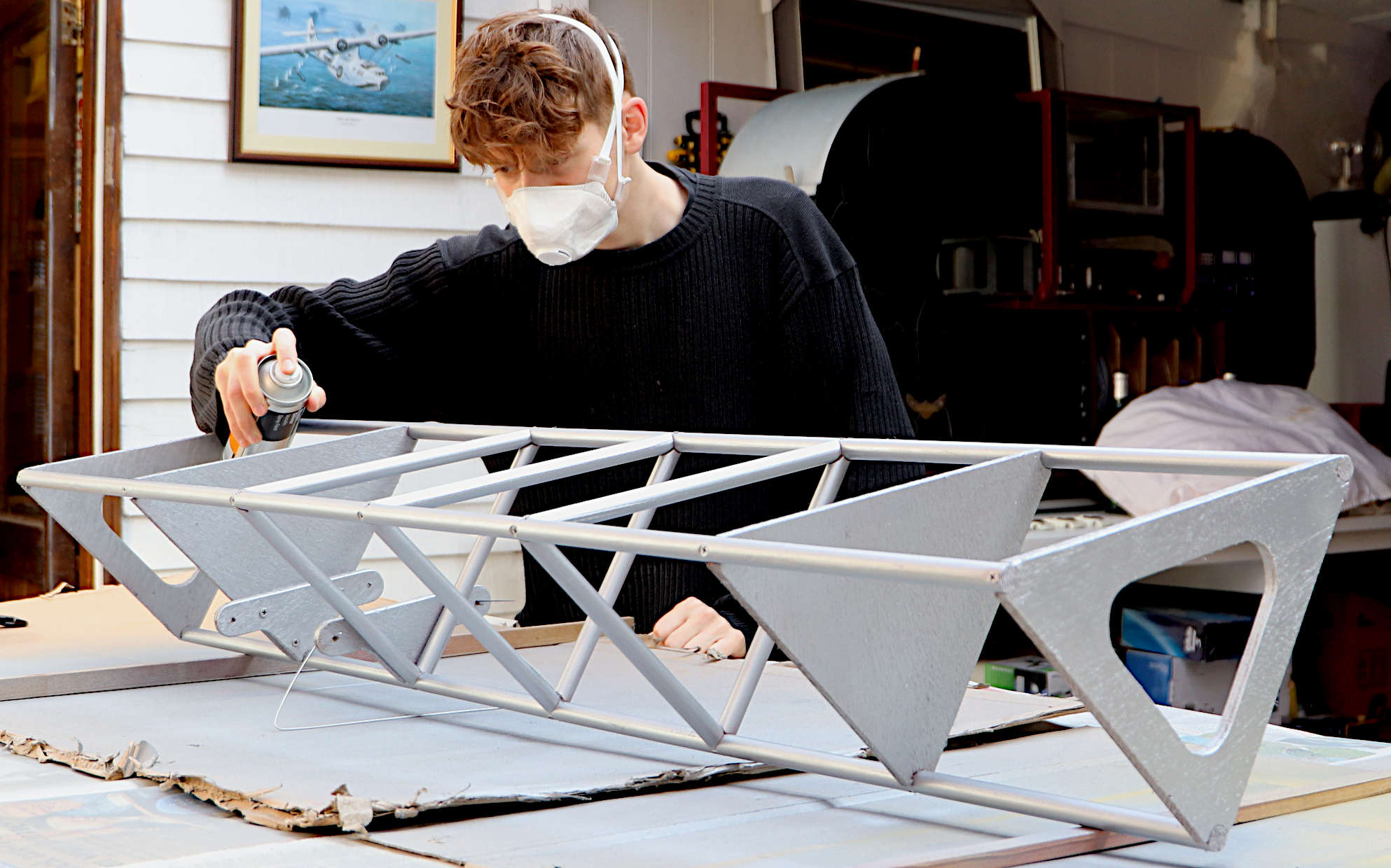|
1:20 SCALE - SUPERSTRUCTURE PAINTING: ELIZABETH SWANN
Dig for gold with our A - Z or set sail for HOME
|
APRIL 2024 - Between February and March we increased the diameter of the base cradle and original Jig base and tower locator clearances. Having calculated the diameter of the larger hull tubes, it was a relatively simple matter to cut larger semi-circles in the wooden Jig. But this was very time consuming. In April, having re-sealed the cut wood, we were able to progress to the vessel itself. In this picture you can see we have, sealed, primed and painted the superstructure, onto which the aluminium aft and helm sections will be fixed. Please note that these modifications to the scale model, do not increase the estimated build schedule of the full size craft. Previously, Leo (Youth Lead) had tried his hand at spray painting on the AmphiMax model, before conducting remote controlled trials.
|
|
APRIL 24TH - Leo is seen here offering up an aluminium fold, to check for length in relation to the deck, which is covered in solar panels. Leo is interested in boat design and practical metal working skills. In the background you can see a solar catamaran design that was tested a long time ago, in the development of the present trimaran design. We are hoping to have this model ready for another local United Nations event in November. So, we have our work cut out.
It is very important to measure carefully. We work to a tolerance of around 0.25mm. But in practice, where there are folds, 0.5mm is usually acceptable with a little fettling at the joins. In the background you can see a SWATH design that was tested well before the Elizabeth Swann design hit the drawing board. The submerged twin hull concept proved to have a higher drag than expected, and it was difficult to trim. The radio controlled model had four tanks that could be flooded or pumped out, for trim and ride height adjustment for different sea conditions.
|
|
|
|
|
These are some of the main components of the 1:20 scale Elizabeth Swan technology demonstrator. We applied for part funding for this project from the Dti's TRIG marine technology competition. But, they said they were concerned about cleaning of the panels of salt caking at sea, as applied to ships. We have solved that problem, and were prepared to share that information in return for helping us with development costs. We considered the automatic furling and sun tracking to be an important feature for applications like cargo ships, cruise liners and ferries - not so the UK government. But then, we suppose that most governments around the world are in a pickle. Looking for ways to power ships to meet with the IMO's zero targets for 2100 without much modification of hulls and decks. The target for 2030 is a 40% reduction in GHG emissions. The Elizabeth Swann is a clean-sheet-of-paper design. Not flavour of the month with fleet operators, as well we appreciate. But then progress is sometimes financially painful. In the commercial world it is all about profits. Now, the planet gets a look in, but still has to wait for existing ships to depreciate. We have suggested a scrappage scheme is applied to induce ship operators to change out hulls earlier, as was applied to cars some years ago.
|
|
Dig for treasure with our A - Z or set a course for HOME shipmates
This website is Copyright © 2024 Cleaner Ocean Foundation. The rights of Cleaner Ocean Foundation to be identified as the author of these works have been asserted in accordance with section 77 and 78 of the Copyright Designs and Patents Act 1988. This website and the associated Elizabeth Swann artwork and designs are Copyright © 2024 Cleaner Ocean Foundation.
|

